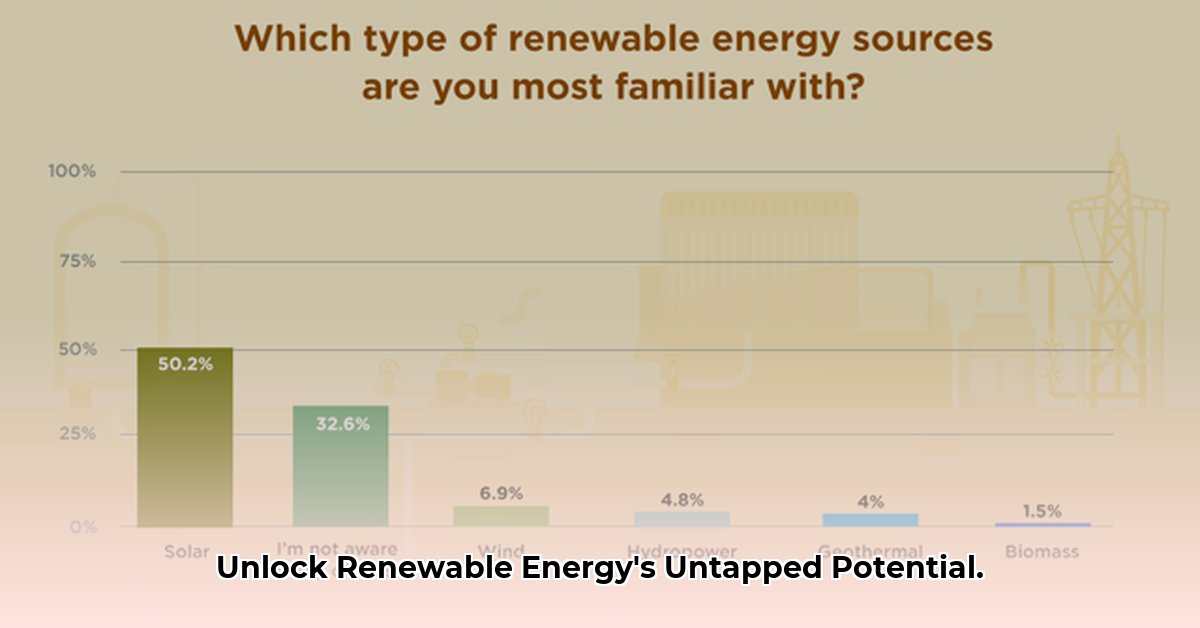Renewable energy offers a cleaner, more sustainable future. However, its sources aren’t universally accessible. Just as certain crops thrive in specific climates, renewable energy technologies depend on geographical factors for optimal performance. This article explores these geographic limitations and dives into innovative solutions and alternative pathways to a clean energy future.
The Geography of Renewables: Where Sun, Wind, and Water Power Fall Short
Renewable energy sources, while promising, face inherent geographic constraints. Their effectiveness is intrinsically linked to location.
Sunlight’s Limits: Solar Energy’s Dependence on Location
Solar power thrives on abundant sunlight. However, cloud cover, latitude, and even dust accumulation impact its efficiency. High-latitude regions receive less direct sunlight, reducing solar panel output. Even in sunny deserts, dust and extreme heat can diminish solar panel performance.
Wind’s Fickleness: The Challenge of Consistent Airflow for Wind Energy
Wind turbines require consistent, strong winds. Inland terrains, obstructed by mountains or forests, disrupt airflow and reduce wind speeds, hindering optimal energy generation. Offshore wind farms offer a potential solution by harnessing stronger ocean winds, but the higher construction and maintenance costs present economic challenges.
Water’s Scarcity: Hydropower’s Dependence on Abundant Resources
Hydropower depends on flowing water and elevation changes. Water scarcity, flat terrains, and the environmental and social impacts of dam construction pose significant limitations to its widespread applicability.
Earth’s Hot Spots: Geothermal’s Accessibility Challenges
Geothermal energy relies on accessing the Earth’s internal heat, typically found near tectonic plate boundaries. This geographic restriction limits its potential in regions far from these geothermal hotspots.
Beyond Geographic Barriers: Alternative Energy Solutions
When geography limits certain renewable sources, several alternative pathways emerge:
| Renewable Source | Geographic Limitation | Alternative Options |
|---|---|---|
| Solar | Low sunlight, dust, extreme temperatures | Energy storage (batteries), grid connectivity, solar thermal |
| Wind | Low wind speeds, complex terrain | Offshore wind, energy storage, hybrid systems (wind/solar) |
| Hydro | Water scarcity, flat terrains | Pumped hydro (if water resources exist), exploring other renewables |
| Geothermal | Limited to geothermally active areas | Biomass, grid connectivity, exploring other renewables |
Bridging the Gaps: Strategies for a Sustainable Energy Future
Several innovative approaches help overcome the geographic limitations of renewables:
-
Energy Storage: Storing excess energy generated during peak production for use during periods of low generation. This mitigates the intermittency of solar and wind power. Pumped hydro storage exemplifies this strategy by pumping water uphill during peak generation and releasing it to generate electricity when needed.
-
Smart Grids: These advanced networks intelligently manage and distribute electricity, balancing the contributions of various sources (renewables, traditional power plants, and stored energy) for a stable and reliable grid.
-
Diversification: Integrating a variety of renewable sources—geothermal, hydro, offshore wind, rooftop solar—creates a more resilient and dependable system overall. Each source compensates for the limitations of others, increasing overall system reliability.
-
Demand-Side Management: Encouraging reduced electricity usage during peak times minimizes strain on the grid and optimizes renewable energy utilization.
-
Hybrid Systems: Combining different renewable sources, such as wind and solar, creates a more consistent energy supply. This approach leverages the strengths of each technology to mitigate their individual limitations.
Exploring Alternative Renewables: Expanding the Toolkit
-
Offshore Wind: Harnessing stronger and more consistent ocean winds, maximizing energy generation while minimizing land use conflicts.
-
Rooftop Solar: Empowering individuals to generate their own electricity, reducing reliance on large-scale transmission infrastructure.
Policy’s Power: Driving Technological Advancement
Supportive governmental policies are essential. Incentives, streamlined regulations, and investment in research and development accelerate the growth of renewable energy technologies, paving the way for wider adoption.
Finding the Right Fit: Tailoring Renewables to Specific Locations
Selecting the optimal renewable energy source depends on regional characteristics, resource availability, and energy demands. What works well in a sunny desert might not be suitable for a windswept coastal area. Careful evaluation of local resources, environmental impact, and associated costs is critical.
The Future of Renewable Energy: Overcoming Geographic Barriers
The continuous advancement of technology plays a vital role in enhancing renewable energy generation and overcoming geographic constraints. More efficient solar panels, innovative wind turbine designs, and enhanced energy storage solutions are constantly evolving. Hybrid systems and the integration of multiple renewable sources are also key to a sustainable energy future.
While the geographic distribution of renewable resources presents challenges, ongoing research suggests a promising future. A diversified approach, incorporating various technologies, intelligent grids, and supportive policies, holds the key to unlocking the full potential of renewable energy and ensuring access to clean energy for everyone, regardless of location. While uncertainty remains around the long-term trajectory of some technologies, the consistent progress in research and development suggests that continued advancements are likely to further expand the accessibility and efficiency of renewable energy solutions.
- How Did Charles F. Brush Discover Wind Energy Tech? - November 19, 2025
- Wind Energy Vertical: Weighing the Pros and Cons of Wind Power - November 16, 2025
- How Much Energy Does a Wind Turbine Actually Create? - November 14, 2025
















